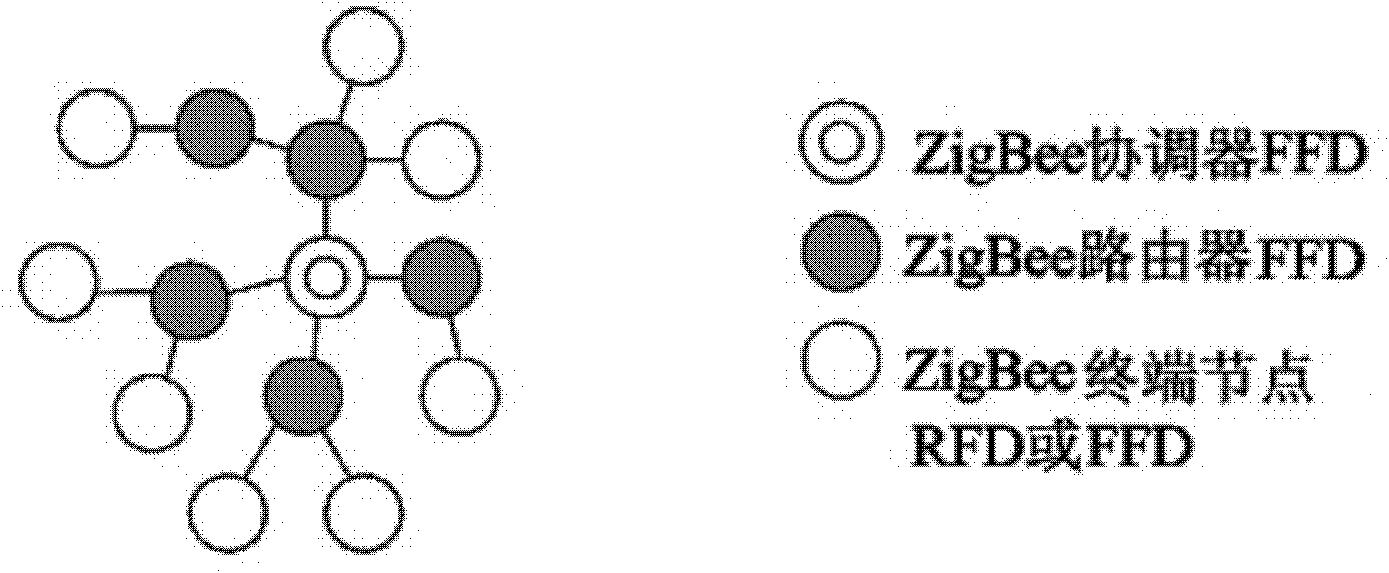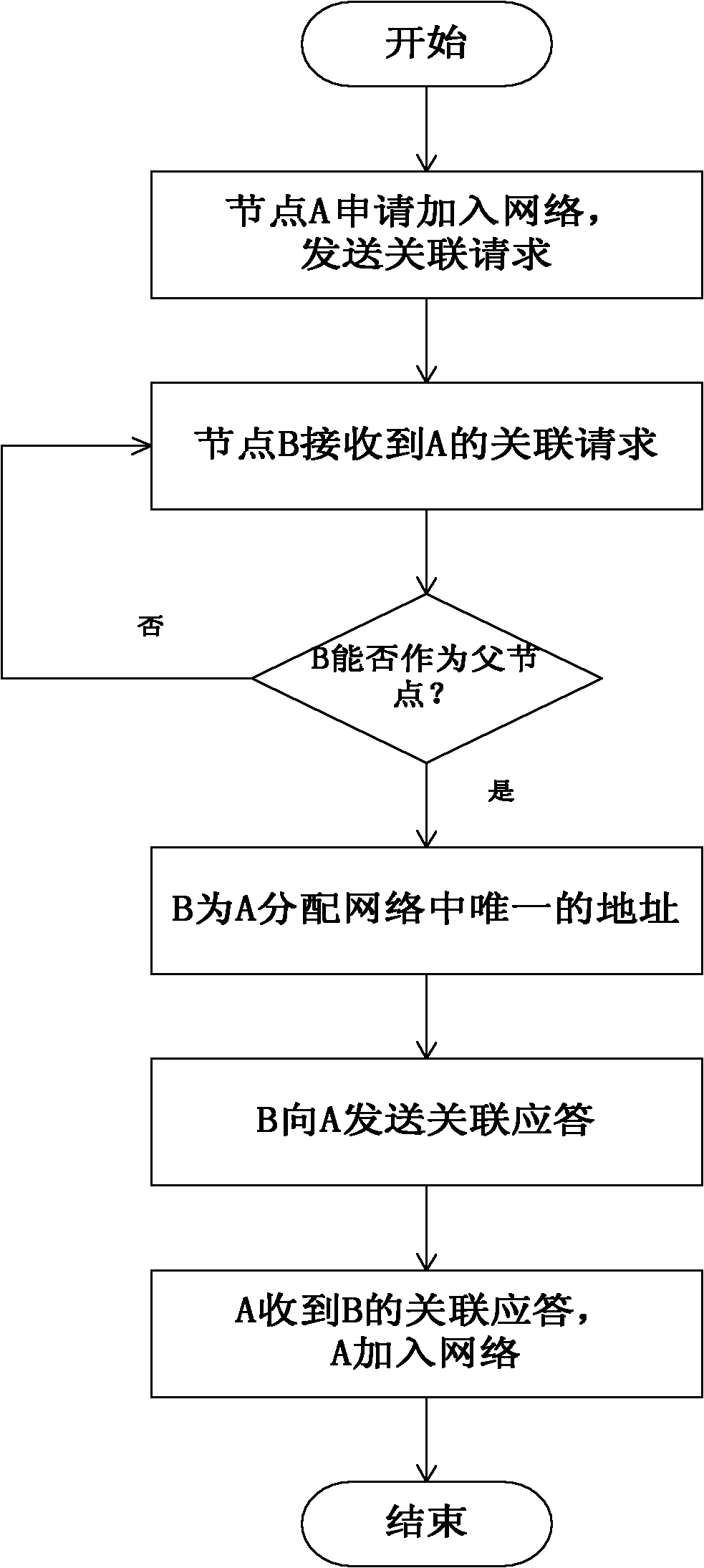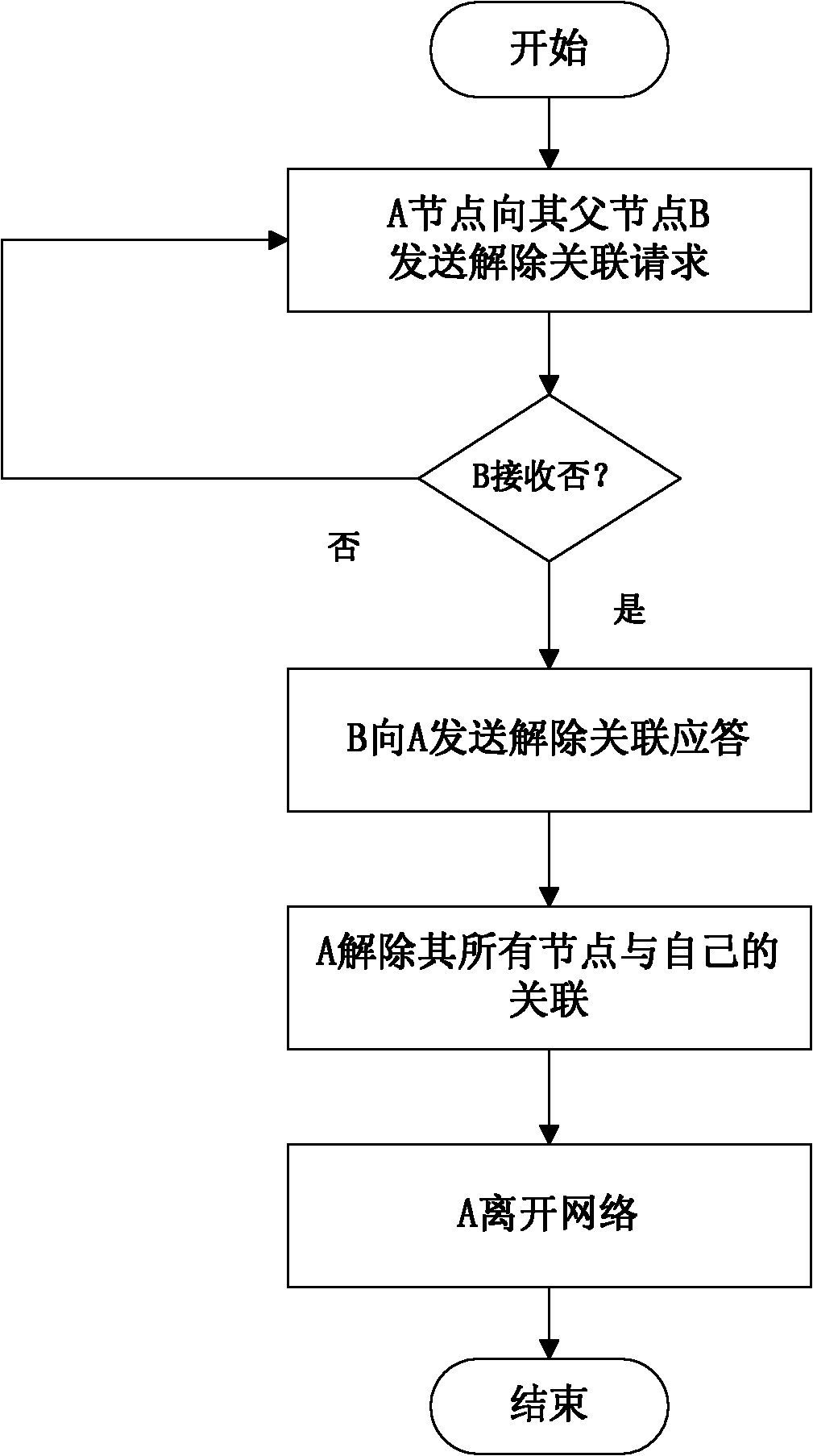Internet-of-things self-organizing network protocol based on tree routing algorithm
A self-organizing network, Internet of Things technology, applied in the field of telecommunications, can solve the problem of large energy consumption routing table, etc., to achieve the effect of reducing energy consumption and avoiding routing table problems
- Summary
- Abstract
- Description
- Claims
- Application Information
AI Technical Summary
Problems solved by technology
Method used
Image
Examples
Embodiment Construction
[0028] Below in conjunction with accompanying drawing, the technical scheme of invention is described in detail:
[0029] combine first Figure 4 Shown, the Internet of Things ad hoc network protocol based on the tree routing algorithm of the present invention comprises the following steps:
[0030] Step A: Set up a ZigBee network, add information such as the address and depth of neighbor nodes in the node to form a neighbor table,
[0031] figure 1 Shown is the tree topology of the ZigBee network: the coordinator FFD plays a coordinating role, and the role of routing nodes is to discover and maintain routes. The function of terminal nodes is simple, does not provide routing functions, and only maintains a neighbor node table.
[0032] Such as figure 2 The flow chart of a node applying to join the network is shown: when a node A that has not joined the network needs to join the network, node A sends an association request, and when receiving the association request node is...
PUM
 Login to View More
Login to View More Abstract
Description
Claims
Application Information
 Login to View More
Login to View More - R&D
- Intellectual Property
- Life Sciences
- Materials
- Tech Scout
- Unparalleled Data Quality
- Higher Quality Content
- 60% Fewer Hallucinations
Browse by: Latest US Patents, China's latest patents, Technical Efficacy Thesaurus, Application Domain, Technology Topic, Popular Technical Reports.
© 2025 PatSnap. All rights reserved.Legal|Privacy policy|Modern Slavery Act Transparency Statement|Sitemap|About US| Contact US: help@patsnap.com



